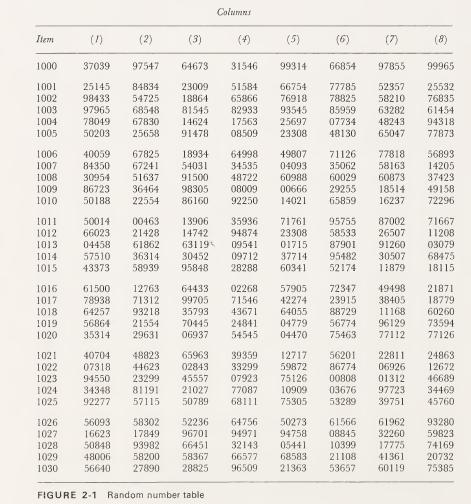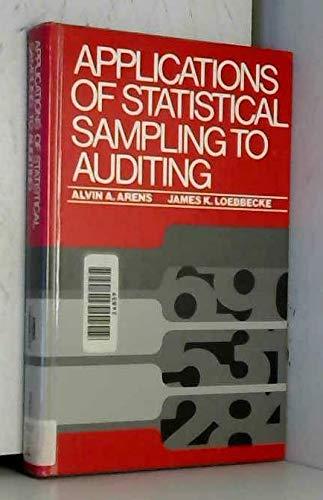In each of the following independent problems, design an unbiased random sampling plan using the random number
Question:
In each of the following independent problems, design an unbiased random sampling plan using the random number table in Figure 2-1. The plan should include defining the sampling unit, establishing a numbering system for the population, and establishing a correspondence between the random number table and the population. After the plan has been designed, select the first five sample items from the random number table for each problem. Use a starting point of item 1009, column 1, for each problem. Read down the table using the left-most digits in the column. When you reach the last item in a column, start at the top of the next column.
a. Prenumbered sales invoices in a sales journal where the lowest invoice number is 1 and the highest is 6211.
b. Prenumbered bills of lading where the lowest document number is 21926 and the highest is 28511.
c. Accounts receivable on 10 pages with 60 lines per page. Each line has a customer name and an amount receivable, except the last page, which has only 36 full lines.
d. Prenumbered invoices in a sales journal where each month starts over with number 1. (Invoices for each month are designated by the month and docu¬ ment number.) There are a maximum of 20 pages per month with a total of 185 pages for the year. All pages have 75 invoices, except for the last page for each month.
Figure 2-1:

Step by Step Answer:

Applications Of Statistical Sampling To Auditing
ISBN: 9780130391568
1st Edition
Authors: Alvin A. Arens, James K. Loebbecke





